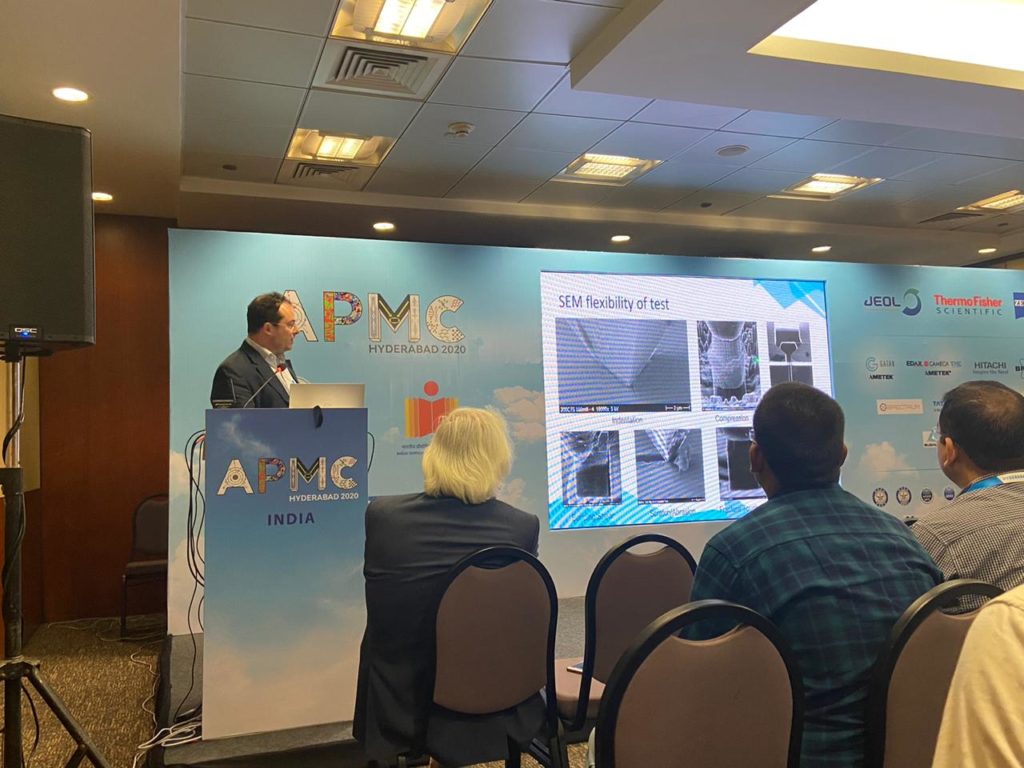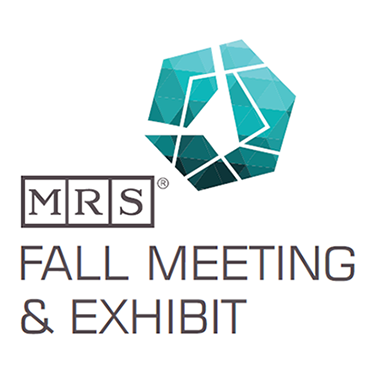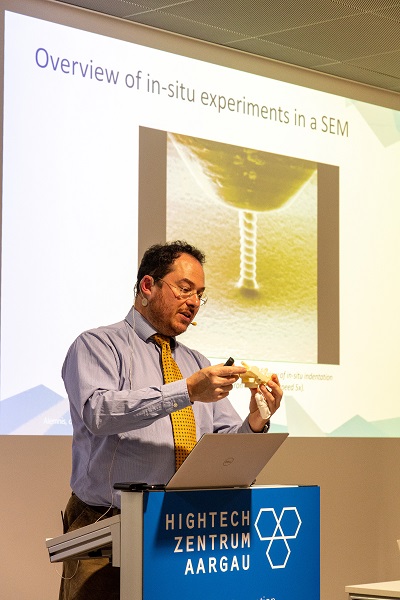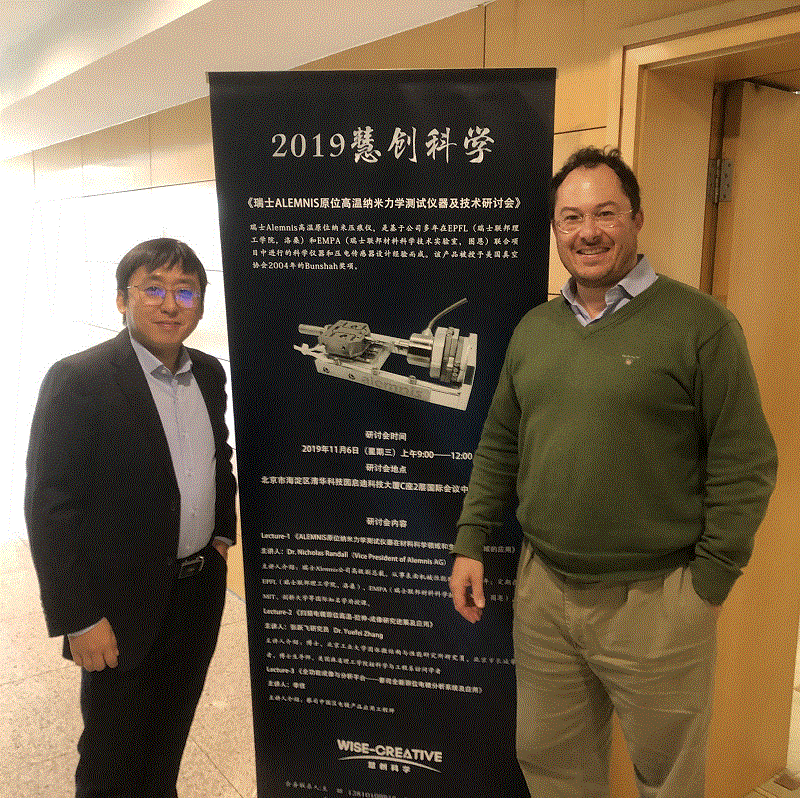
New flyer for the MIT Tribology Course, 22-26 June 2020
This course presents current insights into tribology, focusing on such fundamental concepts as surface energy, elastic and elastoplastic deformation, micro-fracture, and surface interactions at the micro- and nano-scale. Special consideration is given to the application of fundamental knowledge to control friction and wear behavior through lubrication and the selection of materials and coatings in practical situations. Furthermore, modern experimental methods are discussed and several case studies are used to illustrate how fundamental tribology knowledge can be applied in the design of tribological components and systems.
Run annually in June by MIT (Massachusetts Institute of Technology) and commonly known as the “MIT Tribology Course”
Course website: http://web.mit.edu/professional/short-programs/courses/designing_tribological_systems.html

Alemnis presents at the APMC in Hyderabad
Dr. Nicholas Randall presented “Recent innovation in in-situ extreme mechanics at the micro and nanoscale” at the 12th Asia-Pacific Microscopy Conference (APMC-2020) held 3-7 Feb 2020 in Hyderabad, India.

Another successful NanoX-Perience Seminar in Germany!
On 18th Dec 2019, Physical Electronics GmbH- Feldkirchen, held the last Seminar of the year 2019 dedicated to Nanoindentation, extended micro & nanomechanical testing. The speaker Tobias Schütz, presented the special features of the In situ Nanoindenter from Alemnis. The participants learned about the unique possibilities and advantages of nanoindentation in a SEM. Which properties can be measured with the unique Alemnis Indenter and which different test methods are possible?
In the afternoon was a special “Schmankerl”, the live broadcast to Alemnis in Thun, Switzerland. Dr. Jean-Marc Breguet (CEO) , Damian Frey (R&D Manager) and Dr. Rajaprakash Ramachandramoorthy (EMPA) showed different pillar measurements in a live demo. All participants could see the compact, robust, versatile Nanoindenter live. The last talk, also with a live broadcast to Thun concluded the NanoX- Perience seminar with the focus Applications.
The Alemnis system has been used for thousands of studies in the materials science domain, covering all classes of materials (metals, polymers, ceramics, composites) and many different test methods (micropillar compression, tensile testing, indentation, beam bending, mapping, fracture toughness, fatigue and shock, impact, creep, stress relaxation, scratch testing, tribology, etc..).
Physical Electronics GmbH thanks again all participants and our partner Alemnis and is looking forward to welcoming you soon.
The next NanoX-Perience will take place April, 2020. The next NanoX-Pert will take place on April 22, 2020.
MERRY CHRISTMAS and A HAPPY NEW YEAR 2020!

Come and see Alemnis on 3-5 Dec 2019 at MRS Fall, Boston, USA!
Come and see the latest from Alemnis on Booth 1209 at the Hynes Convention Center, 900 Boylston Street, Boston, USA
Two important talks will also be given during this conference, as follows:
(1) High strain rate compressive behavior of nanocrystalline nickel microlattices, Johann Michler, Rajaprakash Ramachandramoorthy, Patrik Schürch, Jakob Schwiedrzik, Thomas Edwards, Damian Frey, Jean-Marc Breguet, Laetitia Philippe, MS01.06.07 (Hynes, Level 1, Room 109, Wed 4th Dec, 4.45pm)
(2) Recent Innovation in In-Situ Extreme Mechanics at the Micro and Nanoscale, Nicholas Randall, Damian Frey, Quentin Longchamp, Jean-Marc Breguet, Rajaprakash Ramachandramoorthy, Jakob Schwiedrzik, Johann Michler, MS01.08.10 (Hynes, Level 1, Room 109, Thursday 5th Dec, 4.30pm)

New EMPA research using the Alemnis Ultra High Strain Rate (UHS) module redefines the theory of “glass flow”….
No one in the world has ever seen what we have measured,” says Rajaprakash Ramachandramoorthy. “We’ve tracked the breaking properties of glass further than any previous research team.” Raj – his nickname among colleagues – works in the Empa lab “Mechanics of Materials and Nanostructures” led by Johann Michler. The team explores material properties on a very small scale: Machines they have developed themselves use tiny stamps to press columns just a few micrometres thin, so-called micropillars. In the electron microscope, and with the help of the most precise force measurements, they can observe how the micropillar breaks or deforms. These results allow the researchers to draw conclusions about the internal structure of materials.
Ramachandramoorthy and his colleague Jakob Schwiedrzik have now used this method to examine fused silica glass – and discovered properties that have little to do with the macroscopic world of glass: Glass is as tough as modelling clay when pressed very slowly, it can tear and burst when pressed a little faster – and at very short, fast pressure impulses it behaves again tough and yielding. “Our slowest compression test took about 20 minutes,” says the Empa researcher. “Our most rapid impulse on the micropillar, on the other hand, took only 100 microseconds. It is comparable to the blow of a hammer.”
See the full English version here: https://www.empa.ch/web/s604/unbreakable-eq66
See the full French version here: https://www.empa.ch/web/s604/unbreakable-eq66

Alemnis presents in-situ tribology testing at the Swiss Tribology Technical Meeting
The annual meeting of SwissTribology (The Swiss Society for Tribology) was held on 12th Nov 2019 at Hightech Zentrum Aargau in Brugg. A talk entitled “Recent innovation in in-situ tribology testing at the micro and nanoscale” was given by Dr. Nicholas Randall from Alemnis.

Join the NanoX-Perience Nanoindentation seminar in Germany on 18th Dec 2019
Pushing the Frontier of Nano Mechanical Testing!
Focus: Testing at high strain rate and high temperature conditions IN SEM and IN AIR
Date: December 18th; 2019
Venue: 85622 Feldkirchen bei München, Salzstraße 8
Physical Electronics GmbH
Website: https://phi-gmbh.eu/wp-content/uploads/2019/08/Invitation-Agenda-Nanoindentation-Seminar_Dec2019.pdf
Overview
❖ Learn more about nanomechanical Testing via Nanoindentation
❖ Learn more about the application possibilities of the Alemnis Nanoindenter
❖ Get to know Physical Electronics GmbH as your partner for nanoanalytical challenges
❖ Take advantage of the opportunity for networking and knowledge sharing

More than 20 Alemnis presentations at ECI conference…
More than 20 presentations were made at the recent ECI Nanomechanical Testing meeting with data generated with an Alemnis Standard Assembly (ASA), confirming that Alemnis has become the tester of choice for in-situ mechanical properties testing. Many thanks to all of our users for generating such a wide range of new applications…

Alemnis in China!
On the 6th Nov 2019, Dr. Nicholas Randall presented Alemnis technologies at a workshop in Beijing organized by Wise-Creative (Beijing) Instrument & Equipment Co.,Ltd.
Many thanks to Darren and his team for putting together this successful event!

Ultra high speed mapping capability
Alemnis introduces ultra high speed mapping capability. This technique is revolutionizing the manner in which surface constituent properties can be characterized by nanoindentation.
A combination of the Enhanced Controller (ECO) with the Ultra High Strain Rate (UHSR) module has enabled mapping to be performed at very high speeds with unparalleled resolution.
To understand the basics of 2D nanoindentation mapping, see the following papers:
N. X. Randall, M. Vandamme and F-J Ulm, Nanoindentation analysis as a two-dimensional tool for mapping the mechanical properties of complex surfaces, J. Mater. Res. , Vol. 24, No. 3 (March 2009) 679-690
https://doi.org/10.1557/jmr.2009.0149
O. K. Mahabadi, N. X. Randall, Z. Zong and G, Grasselli, A novel approach for micro-scale characterization and modelling of geomaterials incorporating actual material heterogeneity, Geophysical Research Letters, Vol. 39, Issue 1 (2012) L01303, doi:10.1029/2011GL050411
https://doi.org/10.1029/2011GL050411
L. Sorelli, D. Vallee, A. R. Alizadeh, J. Beaudoin and N. X. Randall, Disclosing the mechanical properties of green Calcium-Silicate-Hydrates by statistical nanoindentation techniques, Advanced Materials Research, 409 (2012) 544-549


